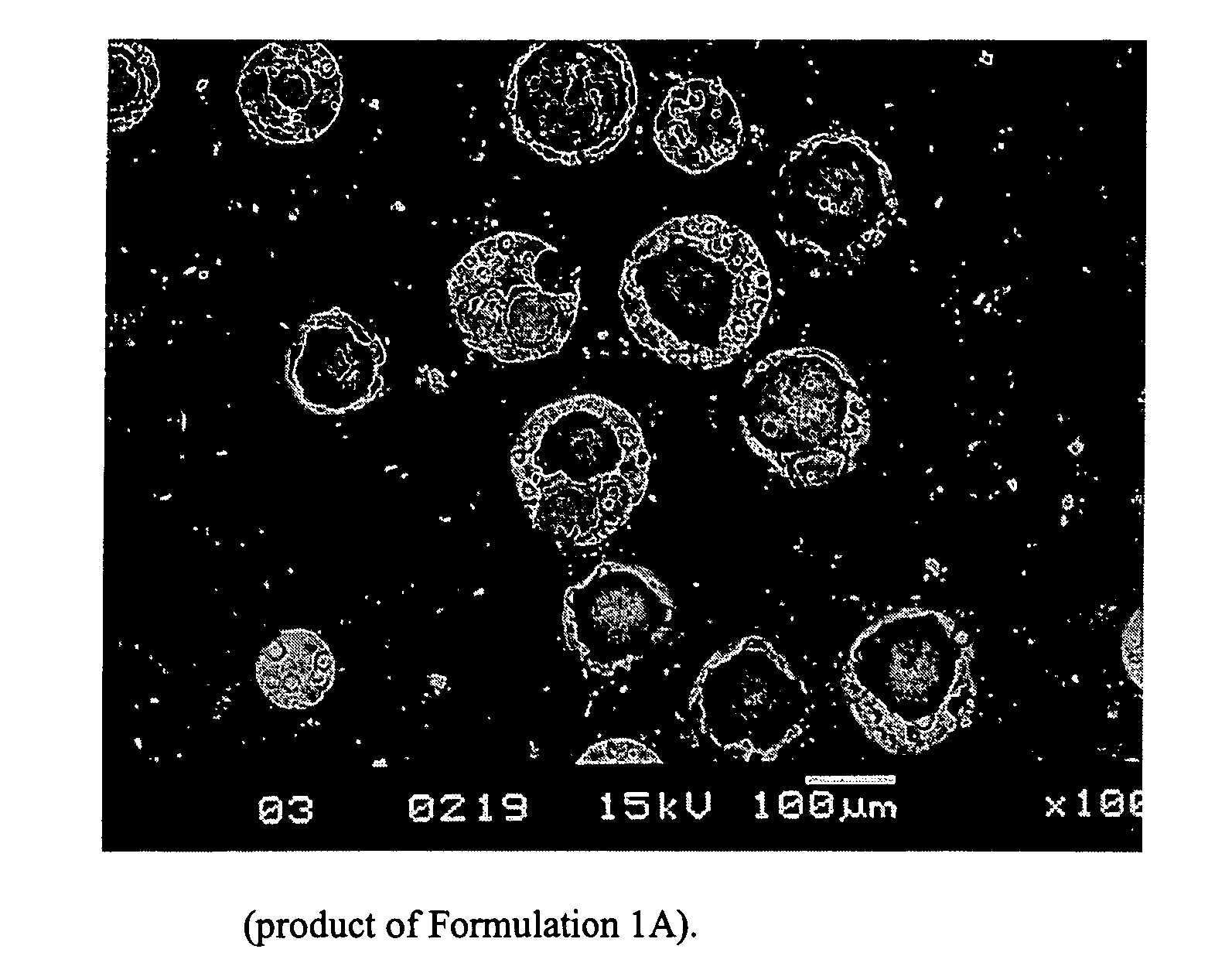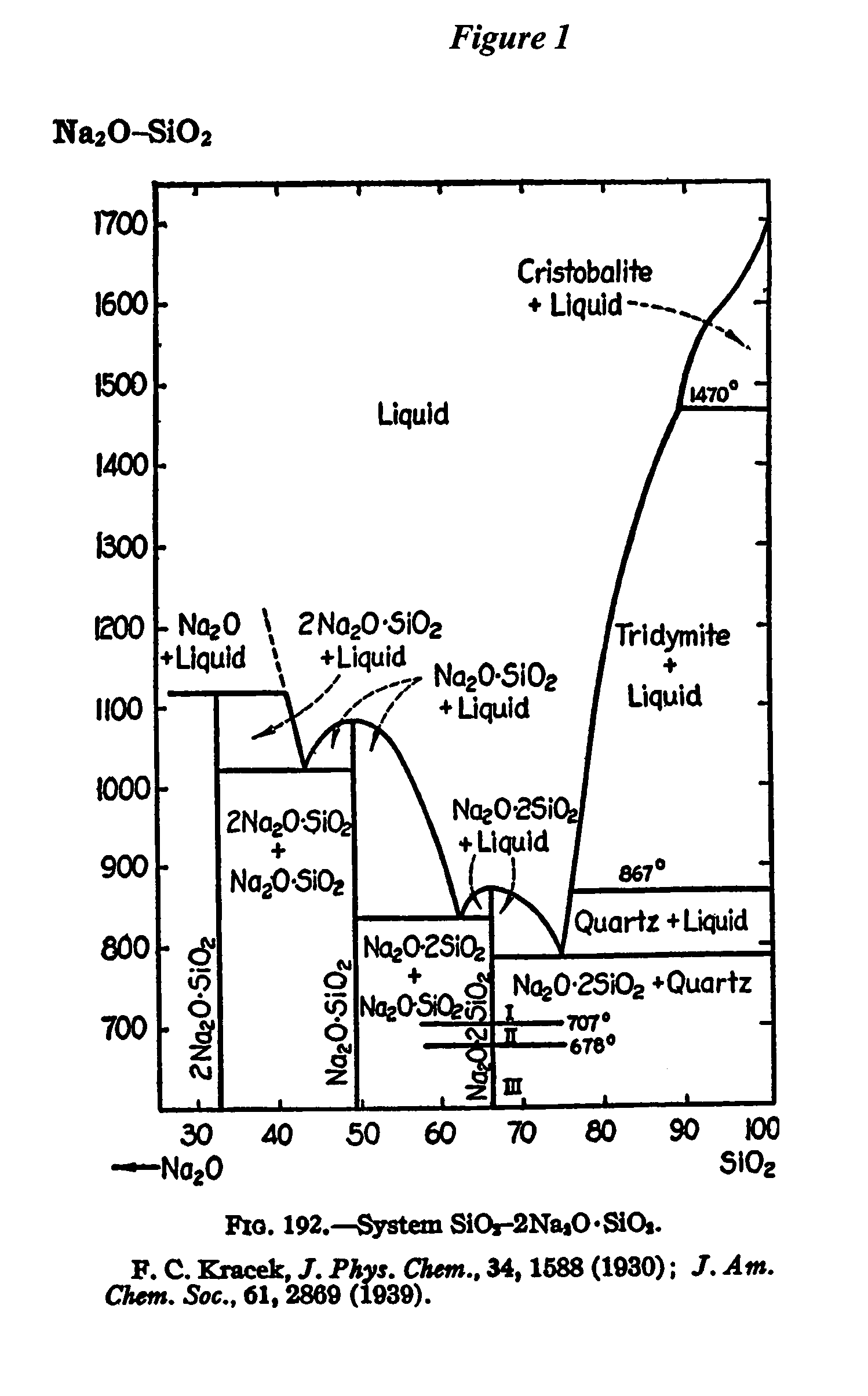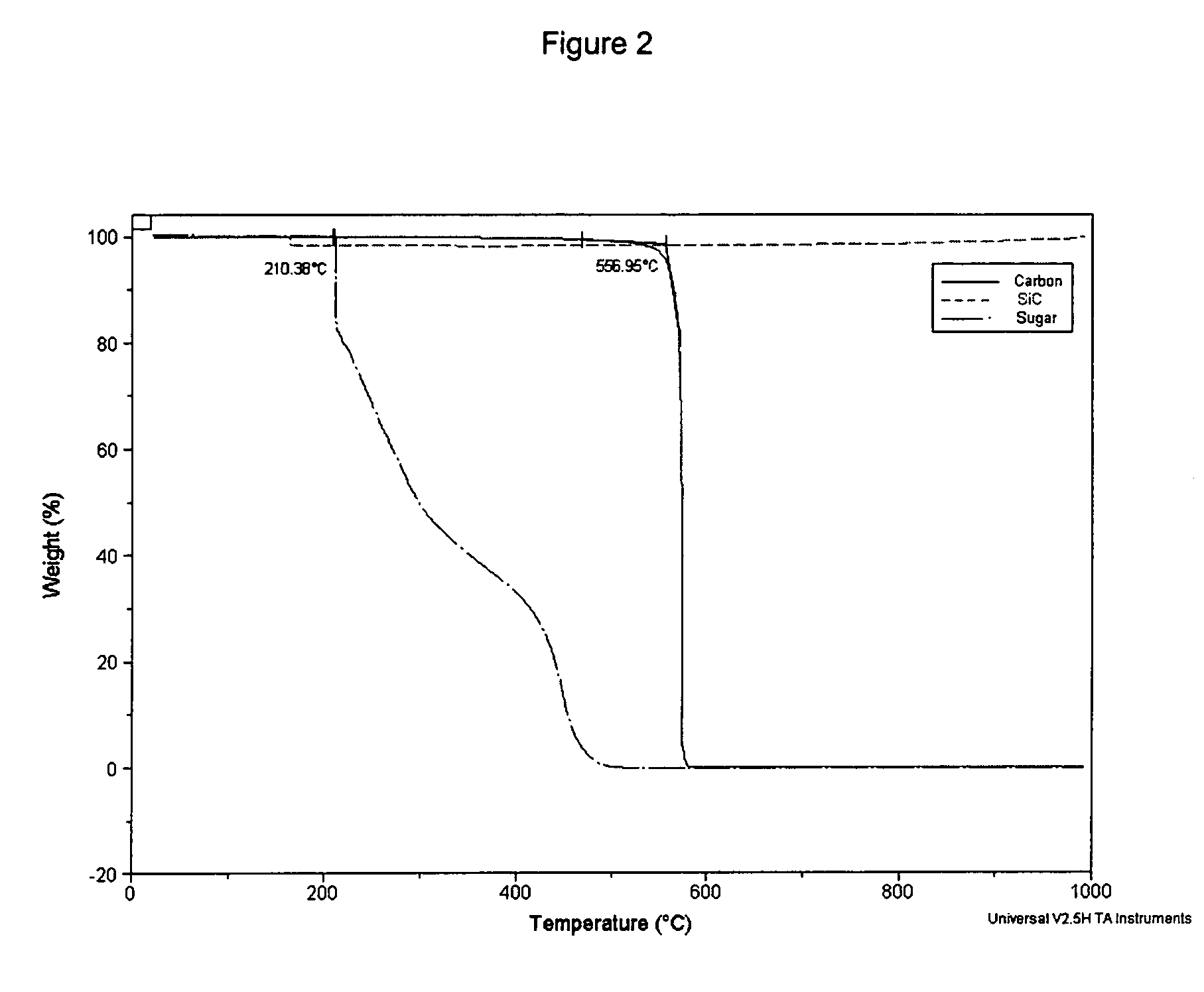Methods for producing low density products
a low-density, product technology, applied in the direction of solid waste management, climate sustainability, domestic applications, etc., can solve the problems of low economic viability of improving recovery, limited use of cenospheres in large quantities, and high cost of fly ash recovery, etc., to achieve optimal viscosity and high yield
- Summary
- Abstract
- Description
- Claims
- Application Information
AI Technical Summary
Benefits of technology
Problems solved by technology
Method used
Image
Examples
example 1
[0124]This example illustrates a method to make expanded microparticles from formulations consisting of basalt and sodium hydroxide.
[0125]The formulations were prepared by mixing ground basalt with solid sodium hydroxide and water. Various mixtures of blowing agents with control agents including silicon carbide, sugar, carbon black and coal were added either in combination or isolation. The formulations are shown in Table 1. The composition of the basalt is given in Table 2.
Formulation 1A
[0126]This formulation illustrates a method to make expanded microparticles from a formulation consisting of basalt, sodium hydroxide and sugar as the blowing agent. A sample was prepared by mixing about 92 grams of basalt; ground to a d50 particle size of about 2 microns, with about 5 grams of solid sodium hydroxide (flakes), about 3 grams of commercial sugar and about 23 mL of water. The formulation is shown in Table 1.
Formulation 1B
[0127]This formulation illustrates a method to make expanded micr...
example 2
[0140]This example illustrates a method to make expanded microparticles from a formulation consisting of various silicate compounds, sodium hydroxide and multi-blowing agents. Expanded microparticles were prepared using blends of a soda lime waste glass and various silicate materials. These blends also include mixtures of a primary blowing agent with control agents of silicon carbide with control agents, sugar, and / or carbon black. The formulations are shown in Table 4. The composition of the waste glass used in this work is given in Table 5.
Formulation 2A
[0141]This formulation illustrates a method to make expanded microparticles from a formulation consisting of glass, sodium hydroxide, with silicon carbide as the blowing agent and carbon black as the control agent. A sample was prepared by mixing about 95.6 grams of glass; ground to a d50 particle size of about 1 micron, with about 3 grams of solid sodium hydroxide (flakes), about 0.4 grams of a commercial grade silicon carbide, ab...
example 3
[0156]This example illustrates a method to make expanded microparticles from formulations comprising various quantities of volcanic ash, sodium hydroxide, mixtures of blowing and control agents and other minor additives.
Formulation 3A
[0157]A sample was prepared by mixing about 78.2 grams of volcanic ash; ground to a d50 particle size of about 3 microns, with about 20 grams of solid sodium hydroxide (flakes), about 0.8 grams of a commercial grade silicon carbide as the primary blowing agent, about 1 gram of a commercial grade carbon black as the control agent and about 43 mL of water.
Formulations 3B and 3C
[0158]Samples were prepared using a blend of volcanic ash and iron (IE) oxide that was co-ground to a d50 particle size of approximately 1 micron. The formulations are shown in Table 7. The composition of the volcanic ash is given in Table 5. The mixture was blended into homogeneous slurry, poured into a flat dish and allowed to solidify at room temperature for approximately 5 minut...
PUM
| Property | Measurement | Unit |
|---|---|---|
| Temperature | aaaaa | aaaaa |
| Temperature | aaaaa | aaaaa |
| Diameter | aaaaa | aaaaa |
Abstract
Description
Claims
Application Information
 Login to View More
Login to View More - R&D
- Intellectual Property
- Life Sciences
- Materials
- Tech Scout
- Unparalleled Data Quality
- Higher Quality Content
- 60% Fewer Hallucinations
Browse by: Latest US Patents, China's latest patents, Technical Efficacy Thesaurus, Application Domain, Technology Topic, Popular Technical Reports.
© 2025 PatSnap. All rights reserved.Legal|Privacy policy|Modern Slavery Act Transparency Statement|Sitemap|About US| Contact US: help@patsnap.com



